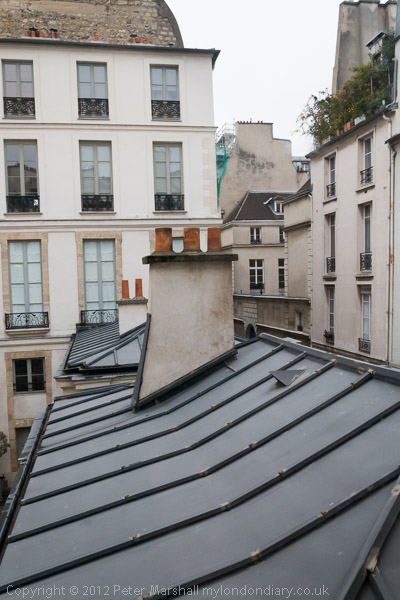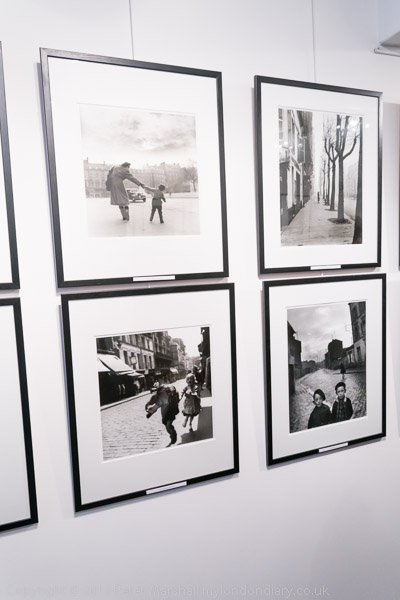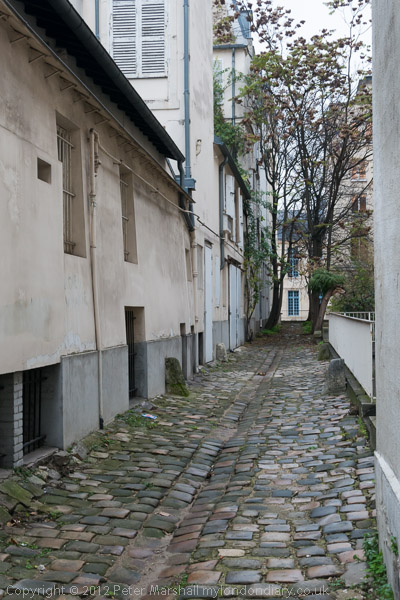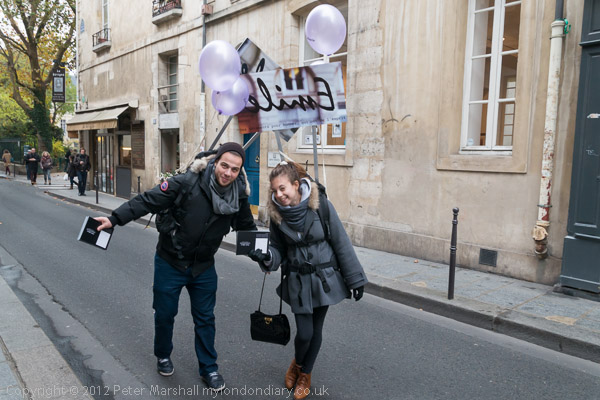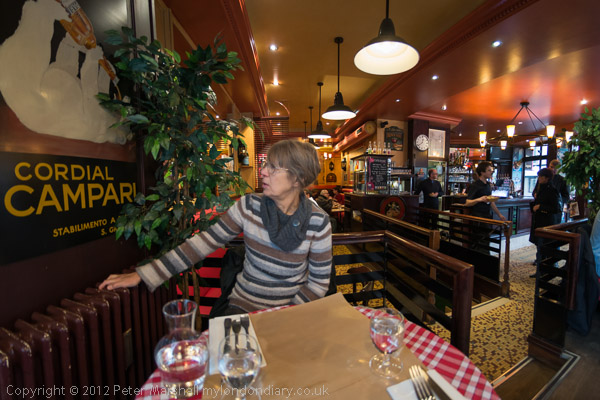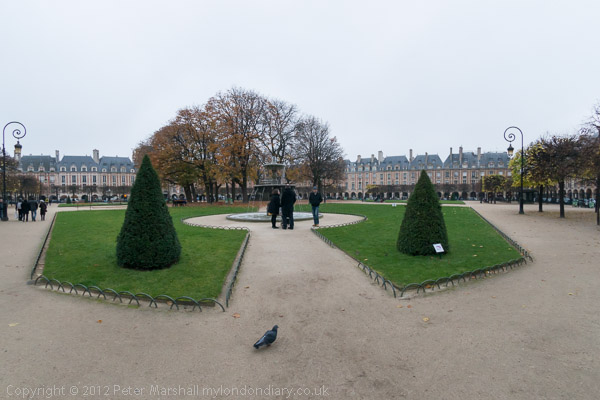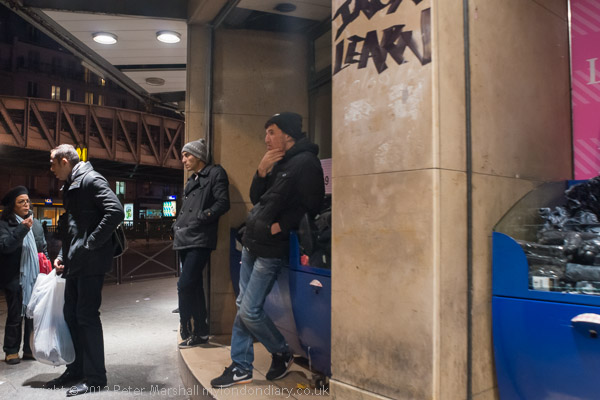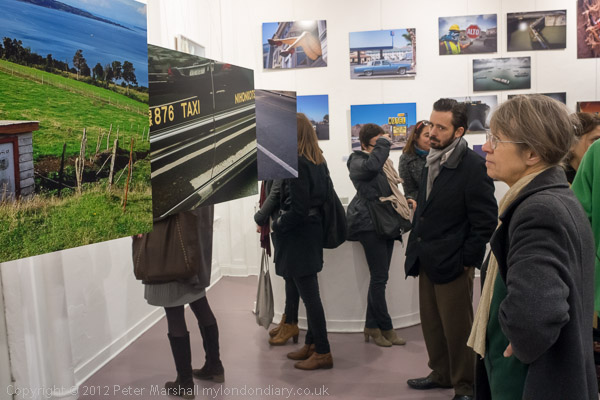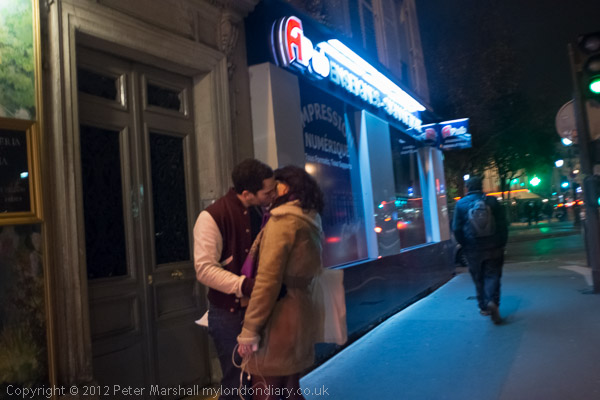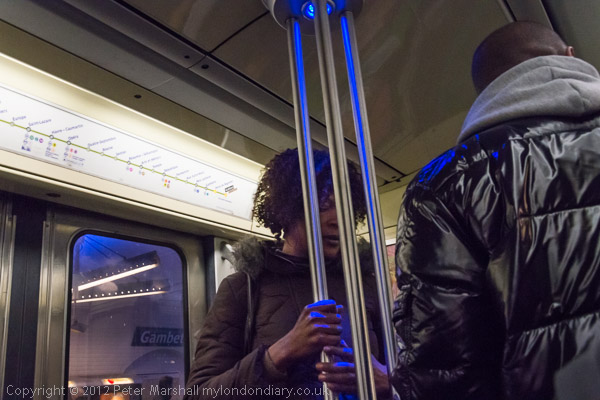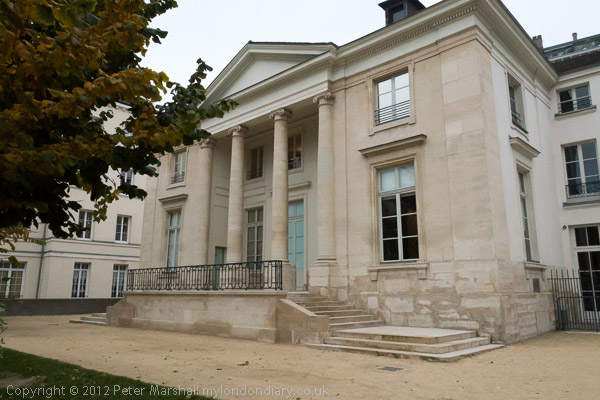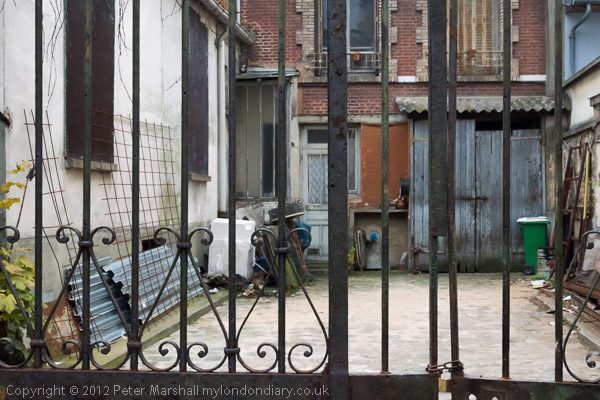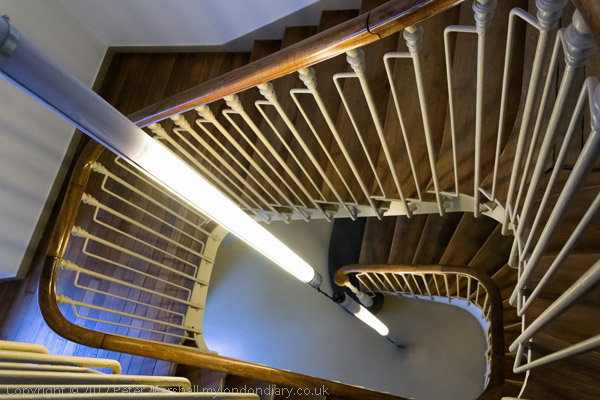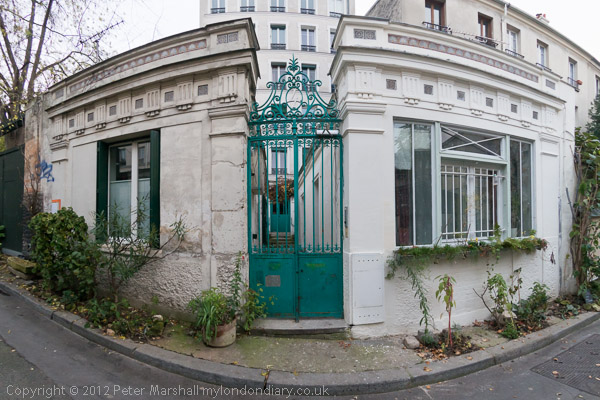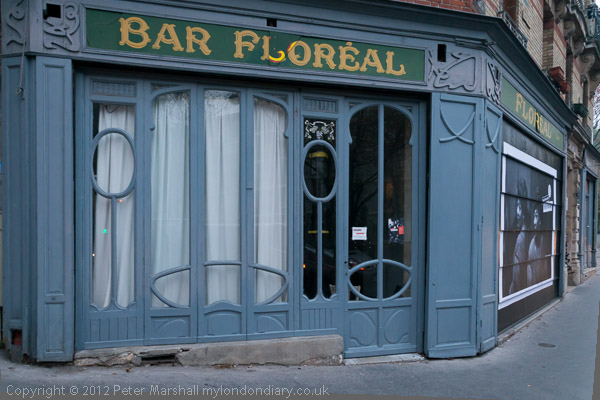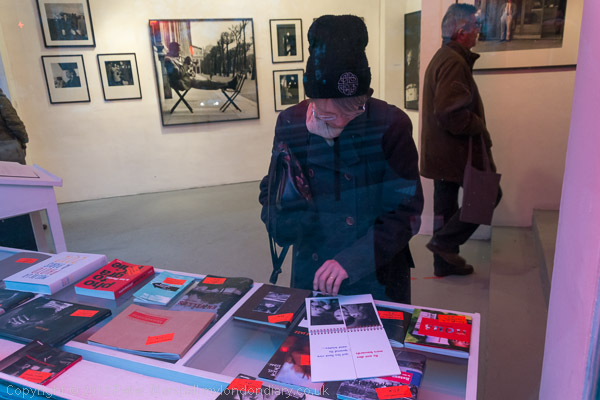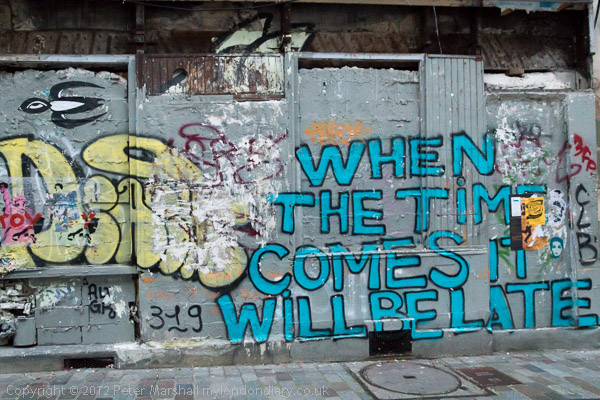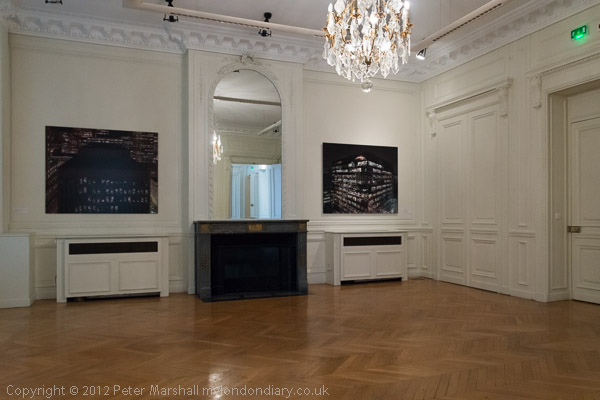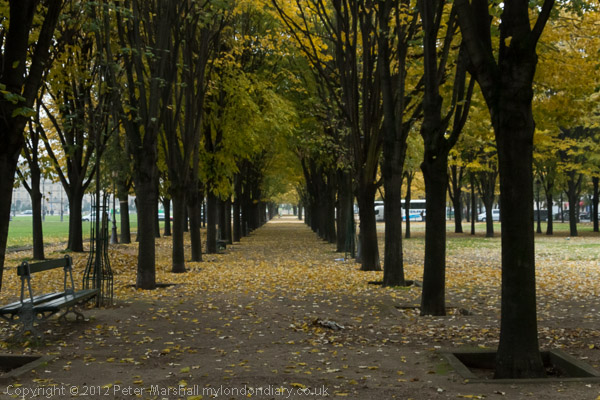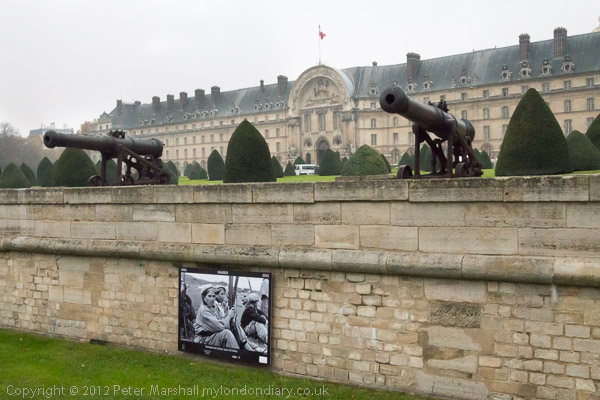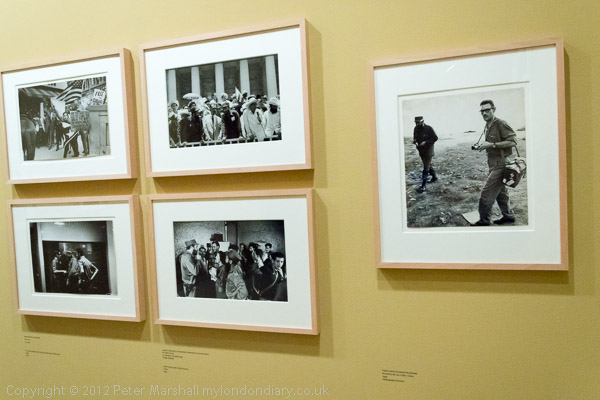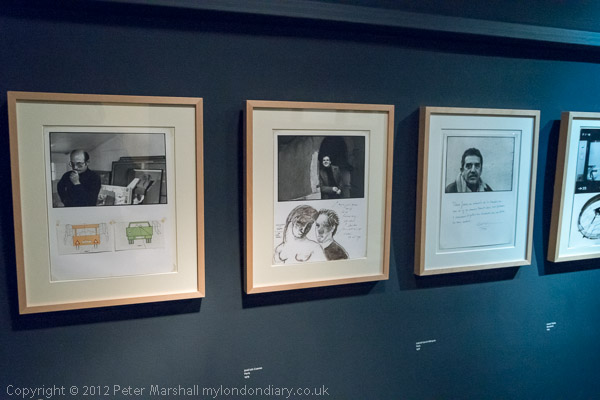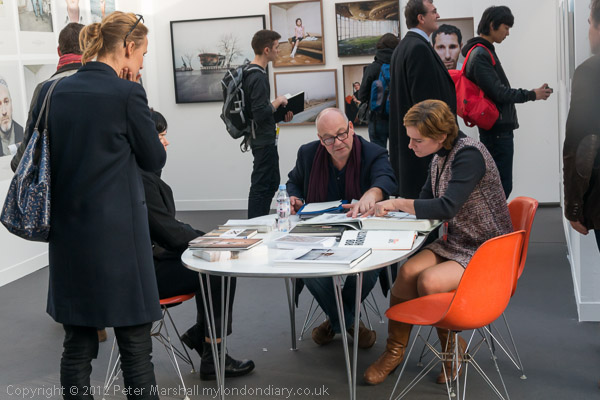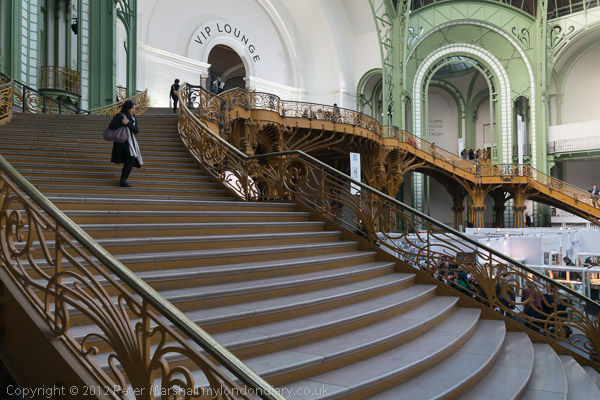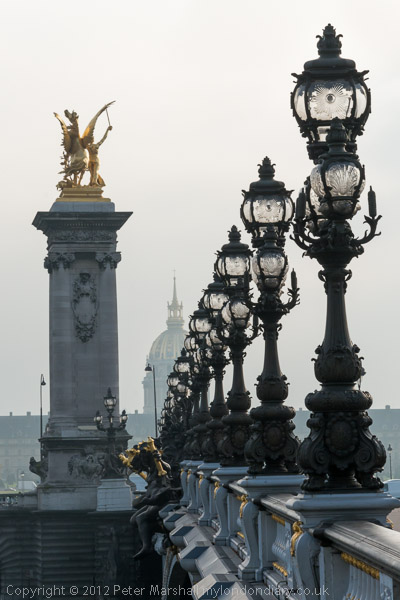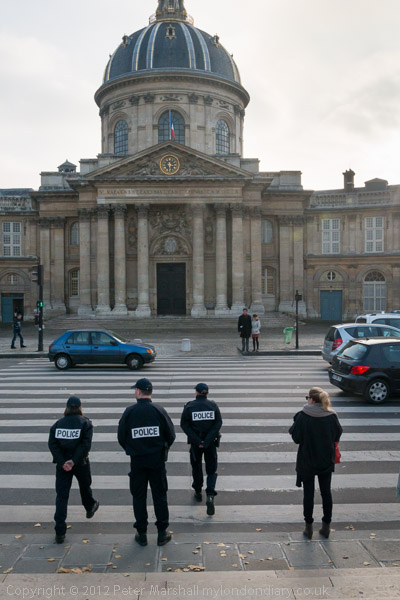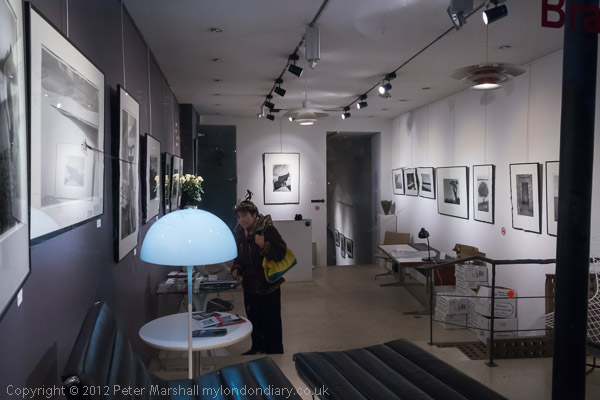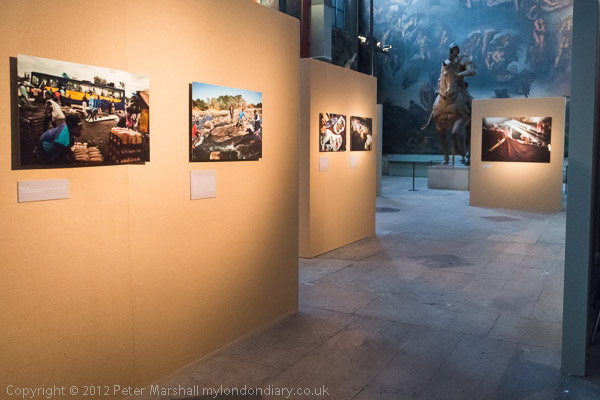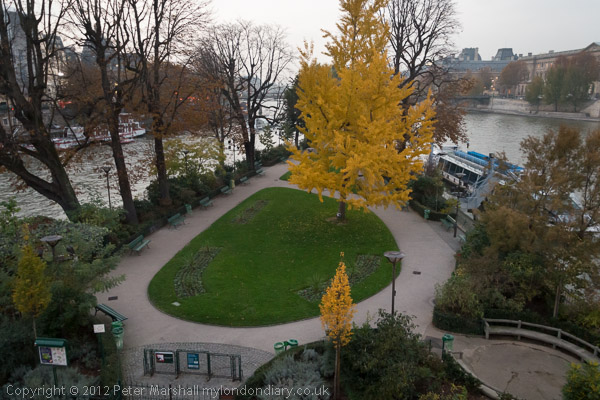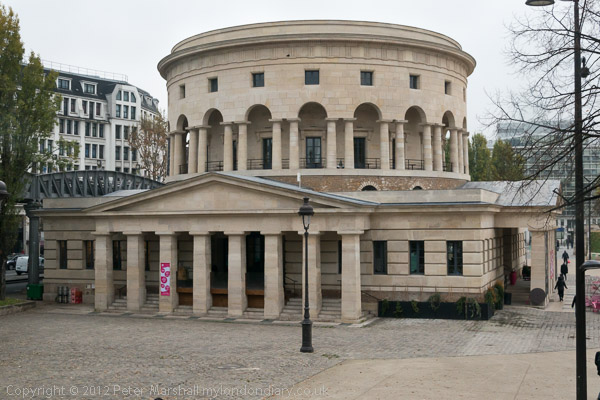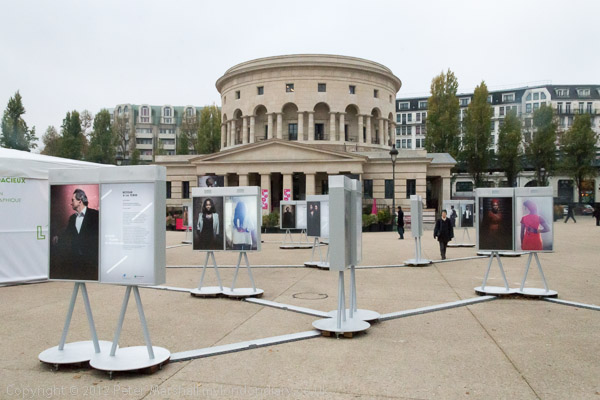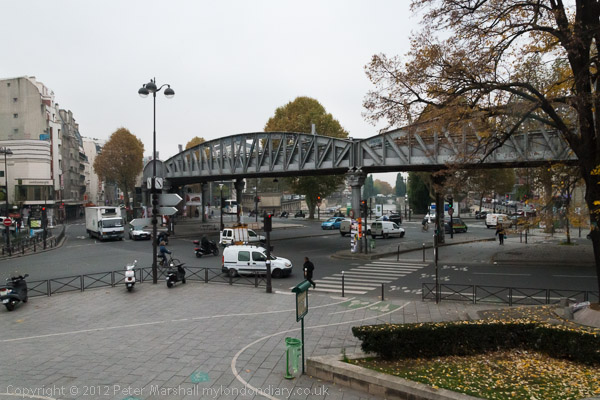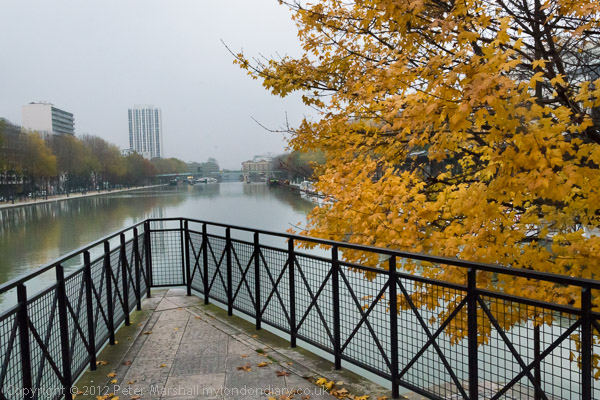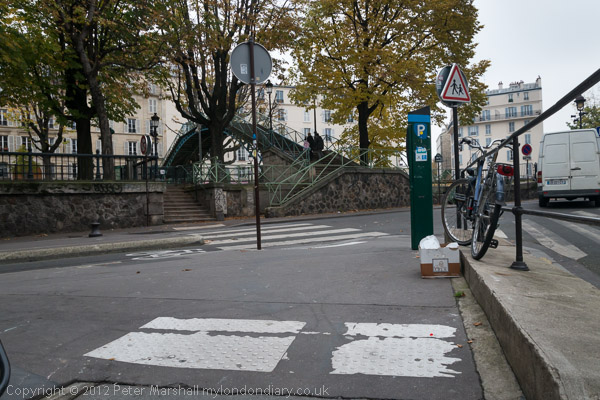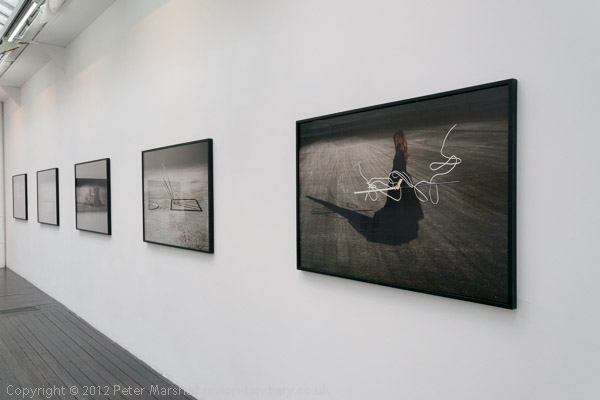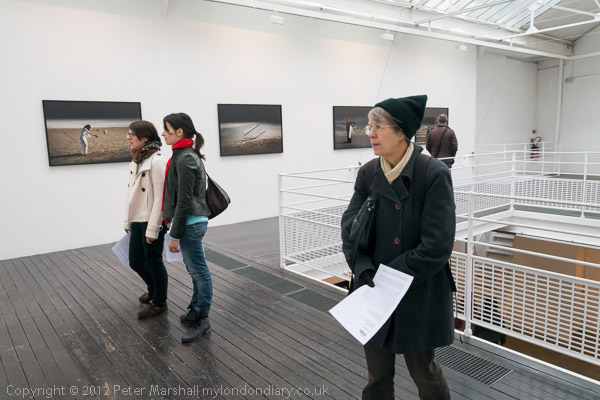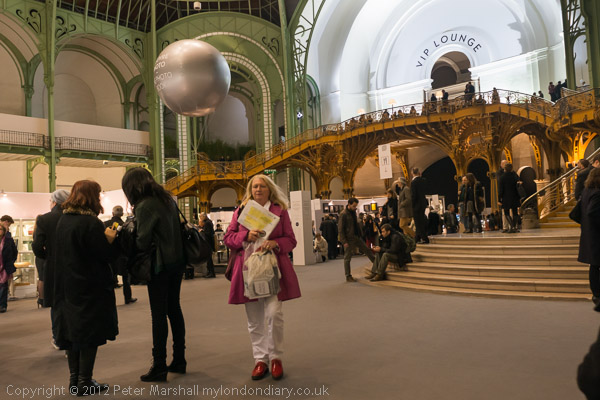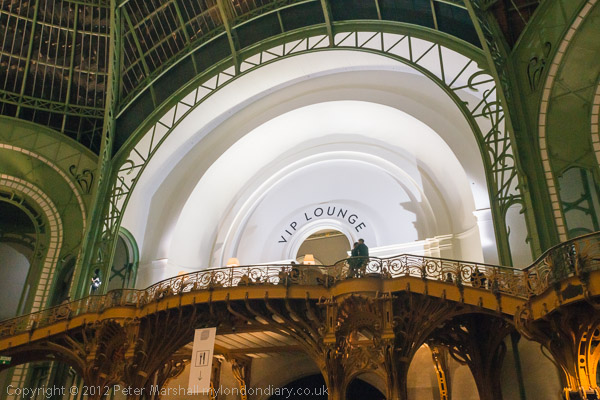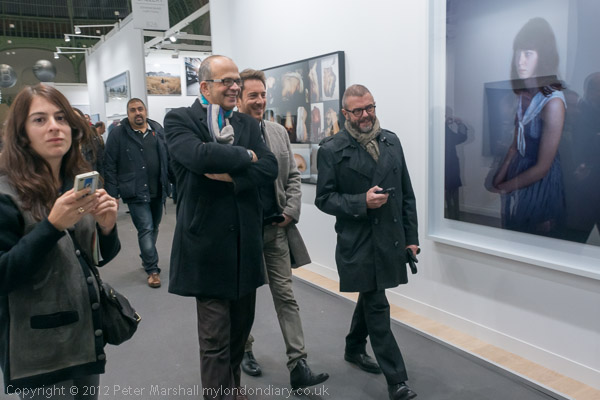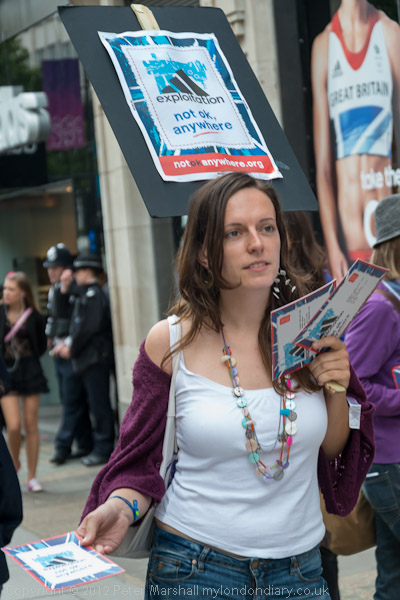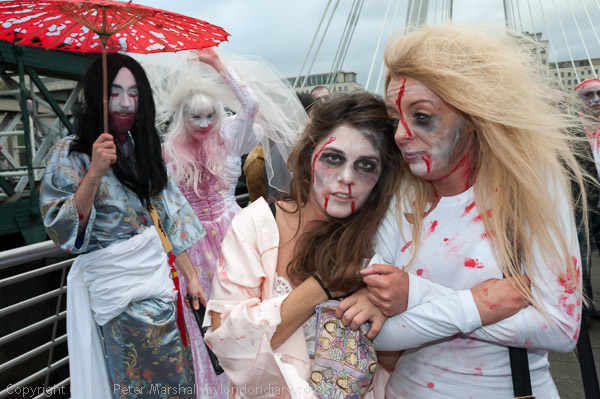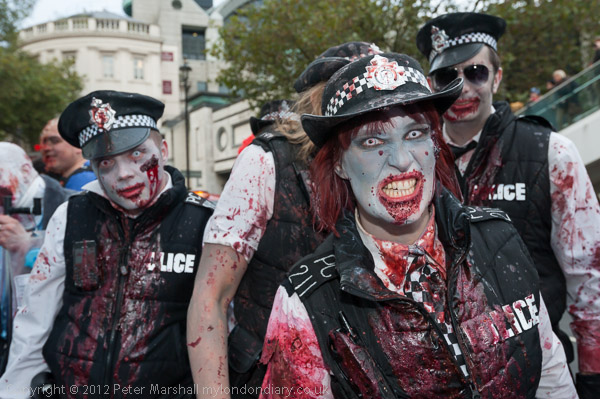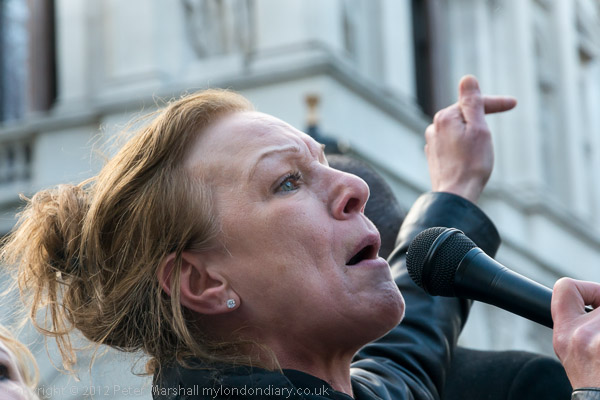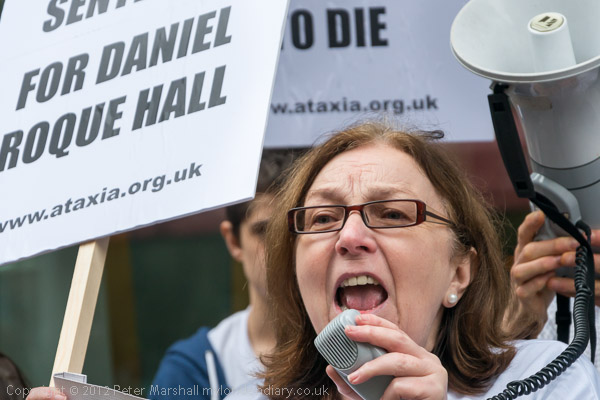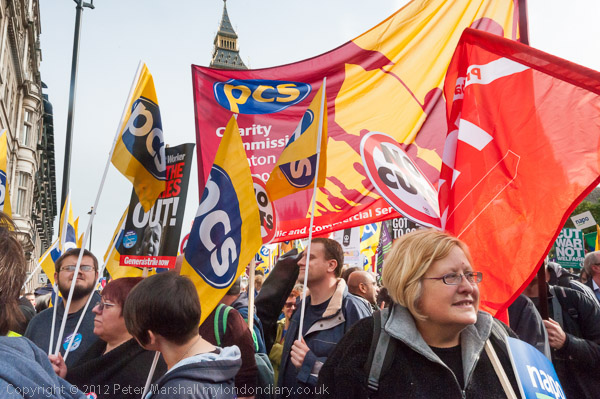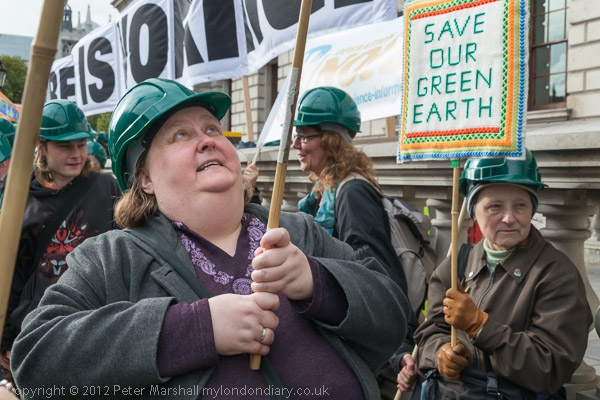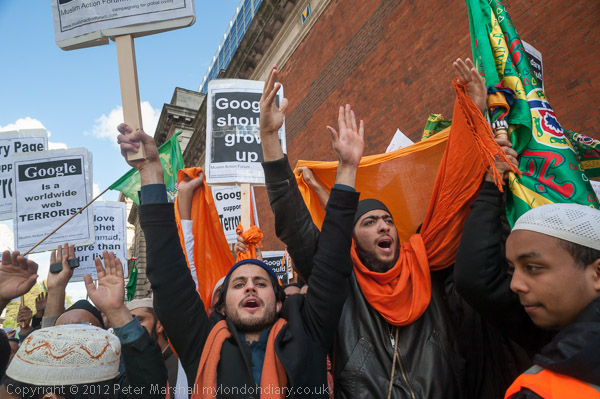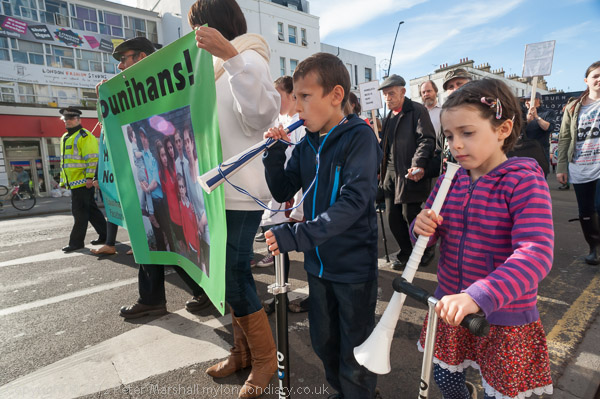One of the really good things that happens during the the Mois de la Photo are the guided tours of shows in the Photo-Off fringe festival. Two years ago we went on one of the first of these and found it really interesting, so we looked at what was on offer this year.
The shows in the ‘Off’ booklet (you can download it to see) are divided into ten areas of Paris, so you can fairly easily plot your own route around them, although if you try it can be very frustrating with the various galleries having different opening days and hours and different exhibition dates. But for the organised ‘parcours guidée‘, although they can’t quite cover all the shows in each area, you can be sure not only that the galleries visited will be open, but that someone – either the photographer, curator or gallery owner – will talk about the work and you will have the chance to ask questions. Of course the talks are in French, but I’ve usually found I can ask questions and get answers in English, and with Linda I have the services of an interpreter where necessary when my O Level (Grade B, 1961 and more than half forgotten) fails, though I’m still better than her if things get photographically technical.
There are 10 ‘parcours’, and the guided tours all take place on Saturday afternoons, and there were only 4 Saturdays in November so the last took place on 1 Dec. But that still means you can only go to half of them as there are two each Saturday. I chose to go on Parcours 3 (Le Marais – Turenne) because it was going to end at the NoFound Photo Fair which I wanted to see – and better still it included free entry.
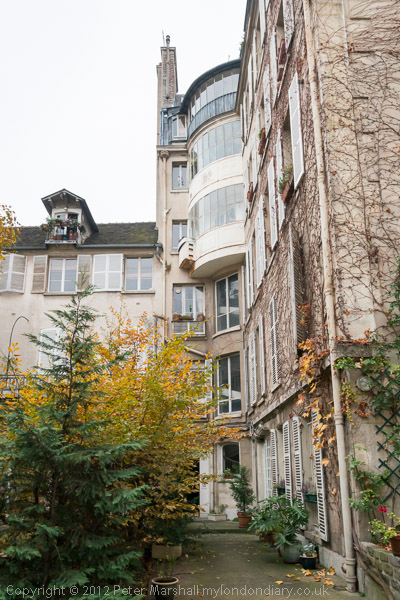
The courtyard opposite the Galerie Sophie Scheidecker
We met at Galerie Sophie Scheidecker, in a courtyard off the rue des Minimes at 2pm; the show there was Pubart, a show of advertising and publicity photography from the 1930s in the USA to recent work in France, and including quite a few interesting examples – such as one of Duffy’s images from the iconic Benson and Hedges campaign; most but not all of the work on show was photographic and included a few images I hadn’t seen before. But my main interest was in the actual venue and the other buildings surrounding the courtyard.
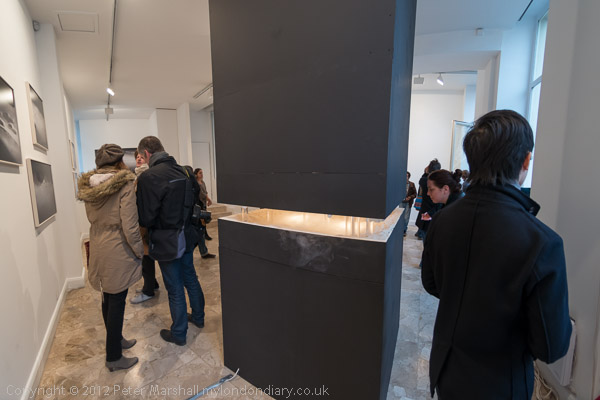
Galerie Maria Lund
Our next stop was Galerie Maria Lund on the rue de Turenne where there was a rather curious installation by Kwang-Wha Chung, Here! I found my car with a large split box, the lower half having a modelled landscape covered with plaster dust in which were embedded small model cars. Jets of what looked like steam and seemed to be fairly random disturbed the white dust creating miniature snowstorms which revealed and covered up the cars. On the walls around were photographs taken looking into this changing scene. It didn’t seem to me to have a great deal to do with photography, although of course the photographs froze and recorded a moment in this changing artificial micro-scene.
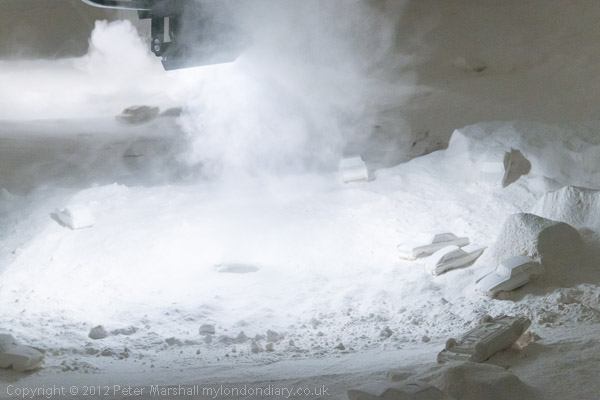
My own picture of those lost cars – and none are mine!
(Dés)Assemblages at Galerie ChipChop showed the work of three women photographers who in different ways produce images that are divorced from reality. Hélène Jayet combines overlapping exposures taken at different times and from a slightly different viewpoint on photographic film. Neta Dror from Israel sees the way she treats her images chemically to erase parts of them as some kind of antidote the the constant stream of news photographs flowing from her country. Canadian Amy Friend doesn’t take her own photographs, but uses family pictures and other scenes from the early nineteenth century, staining or otherwise altering the paper and punching holes through it to let through light so that the object is given a new life. The series name ‘Dare alla Luce‘, literally Give the Light, reflects the dual meaning of the Italian which according to the gallery text also means “to give life” or rather give birth.
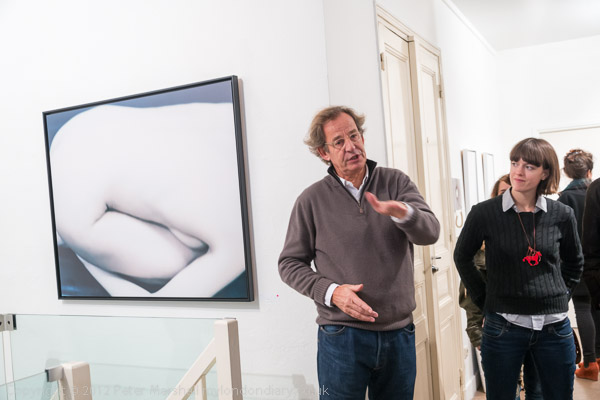 Jérôme Tisné
Jérôme Tisné
At La Galerie Pascal Gabert we saw Nus, large fairly abstract studio nude images made using north light on a 8×10 camera by Jérôme Tisné, who spoke at some length about these images. The large prints are almost all either nearly black all over or nearly white all over, using extremes of exposure – up to 20 minutes, combined with some deliberate movement of the camera and extended development of the Polaroid colour film. The dark images seemed to me to have rather more subtlety of tone and colour, while the very pale works the blue sometimes dominated. Tisné made these works as a deliberate contrast to his long and successful career in press and publicity photography, but while I found the technical aspects of interest (and I hope I got them roughly right despite my language problems) I didn’t find the works particularly interesting as images. There were echoes of classic works – such as the nudes of Edward Weston, but I didn’t feel that the images had the kind of presence of his work and felt that perhaps the technique had rather become an end in itself.
Next came Joël Denot at NeC nilsson and chiglien in the rue Vieille du Temple. His work “concentrates on the medium’s fundamentals: colour and light” and indeed there is little else in these images with just a vague hint of the subject. The images seemed to me to be some kind of quasi-scientific inquiry into the properties of Cibachrome (Ilfochrome) or Polaroid, perhaps like the results which might (on a smaller scale) illustrate a laboratory notebook, or perhaps some kind of effort in reverse-engineering the process. But in the main it wasn’t work I could relate to as art or as photography.
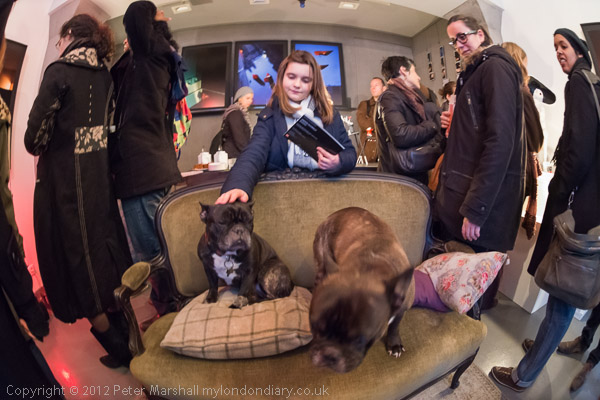
Placement libre-atelier galerie
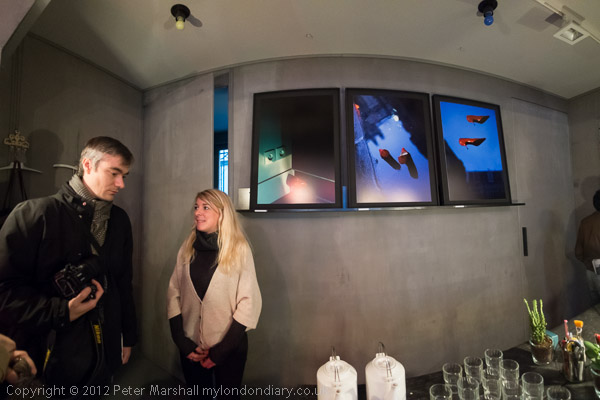 Our tour guide with Sandrine Maugein and her work
Our tour guide with Sandrine Maugein and her work
Our next stop was much more to my taste, and the glass of tea and slices of cake we were given by Sandrine Maugein were welcome icing on the photography. The Placement libre-atelier galerie had a welcoming atmosphere and the work was full of humour and insight and a strong graphic sense. Frohlein.s “la femme invisible aux talons rouges” – the invisible woman in red heels – was certainly full of wit, if the message was at times certainly deliberately ambiguous. The red shoes certainly got around, and I think the statement like the pictures is full of plays on words and ideas.
Across the road Galerie LJ was like a small zoo, full of large animal sculptures, but it was the work in the basement we had come to see, Audur by Alix Marie, whose work combines performance and photography and unlike most such hybrids produces some interesting images. Born in Paris in 1989, she studied in London at Central Saint Martins College Of Art. Audur was the result of a residency in Iceland and shows characteristic, almost picture postcard images of the country but with the artist herself intervening in the scene. I rather liked the square lighthouse with its red and white stripes and Marie standing on the stones of the beach with her head hidden by a white box with red stripes. Also on show was work from another residency in Slovenia, where she worked in a deserted building producing Les éléments du décor, using her body and simple wooden boxes and objects, with images that very much reflect her involvement in sculpture.
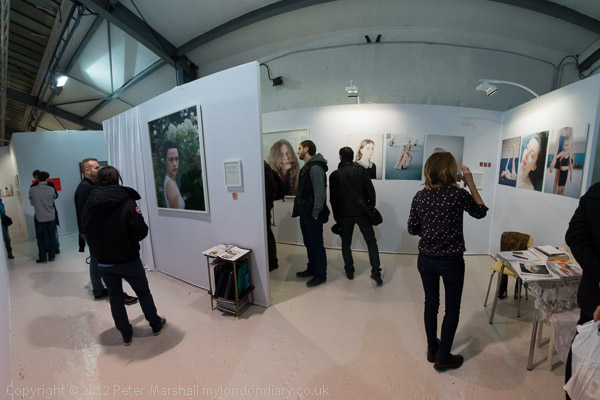
In the NoFound Photo Fair
Finally we arrived at the NoFound photo fair in the large Garage Turenne, which brings together all sorts of people with a real interest in contemporary photography. Here there was far too much to write about it all, but there was certainly a great deal of interest in photography among everyone I met, even if we didn’t always share the same opinions. Quite a lot of the work I didn’t find particularly interesting, but there was so much to see in the fairly short time I had that was just as well.
One particular set of work that stood out for me was by South African photographer Graeme Williams, whose essay ‘
Painting over the Present looks at the environments occupied by some of South Africas poorest people in small towns, townships and cities throughout South Africa. As he writes “although wealth and power have shifted hands since the first democratic elections in 1994, many of the benefits of these shifts have failed to filter down to grassroots level.”
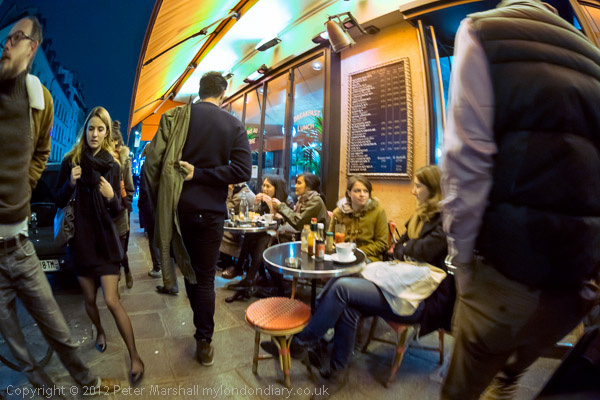
Too soon it was time for us to leave as we had arranged to go out for dinner though I did take a few pictures as we made our way towards our meeting place.
